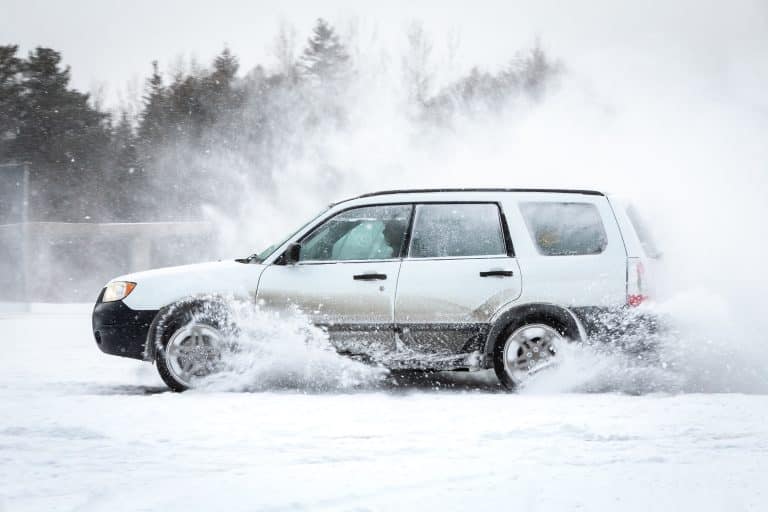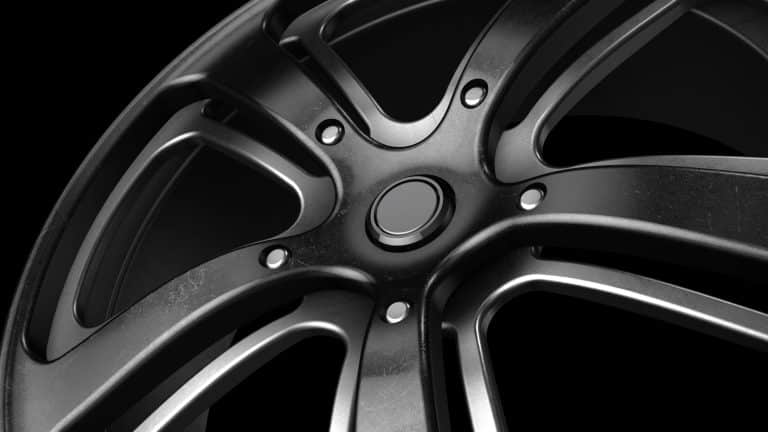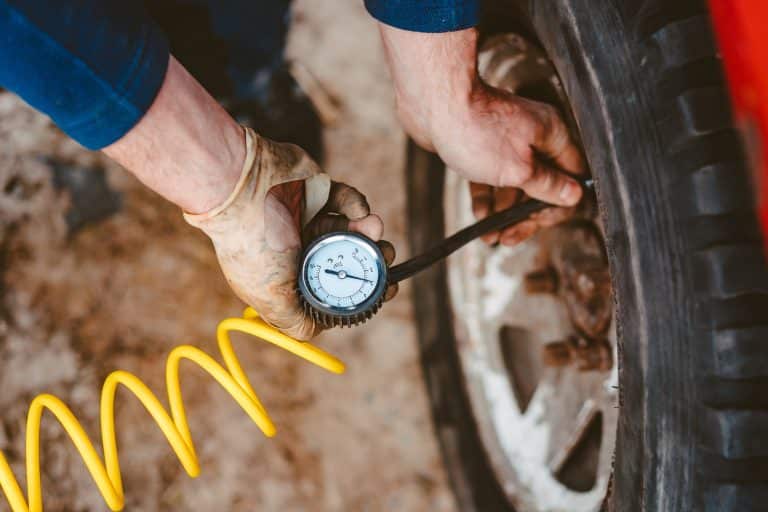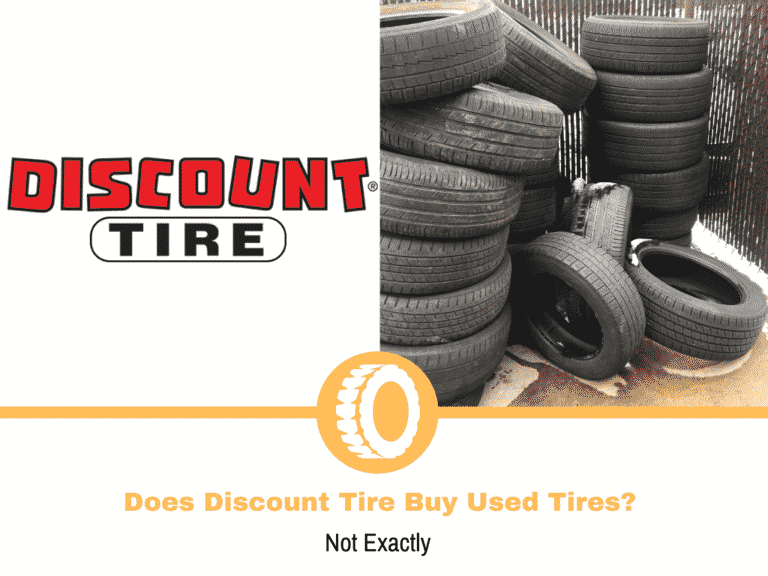How To Foam Fill Tires on a Skid Steer
Foam-filling skid steer tires is considered a safe option as doing so gives more durability, traction, and strength to the tires. To fill foam in the tires, you can either take the DIY approach or get a mechanic to do it for you.
The better option is to go to a mechanic. But if you want to do it yourself, pay attention to the tire and closely observe till the point foam starts to leak out from the valve stem portion.
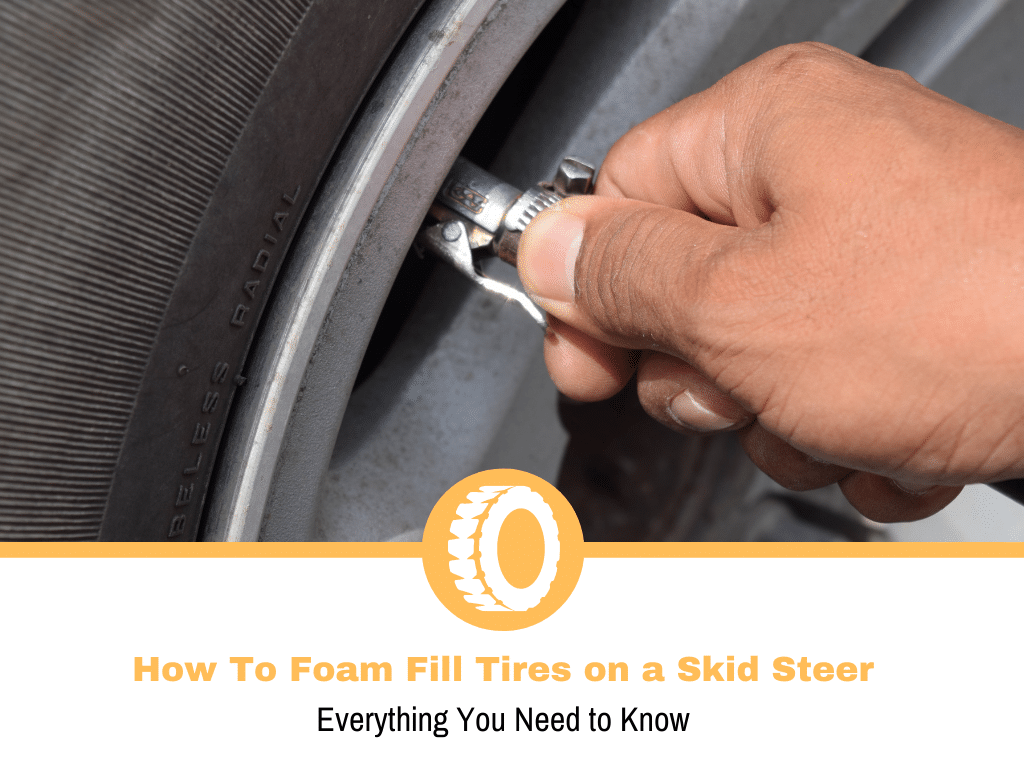
How to Foam Fill Tires on a Skid Steer
- Step 1: Remove the tires from the skid steer and set them aside. You can take out two times at a time or if you have the appropriate support system, take out all four tires at once. It will only allow us to get things done faster.
- Step 2: Place the tire on the floor; make sure there is a large piece of wood or cloth underneath the tire. The wood or cloth is for the mess created with the foam filling.
- Step 3: Drill three holes in the tire sidewall and remote the stem valve. The holes need to be of the same diameter as the foam filling straw.
- Step 4: Inject the foam inside the tire from one of the holes in the sidewall. Remember that you need at least 520 lbs of foam.
- Step 5: Keep on filling until the foam starts to come out of the other two holes and the valve stem. Once done, set the tire aside for 24 hours.
- Step 6: Come back the next day, clean the mess around the tires and the floor. Fit the tire back onto the skid steer, and you are good to go.
What Are Foam Filled Skid-steer Tires?
Foam-filled tires are a type of pneumatic tires that were introduced to replace air-filled tires. Because the air-filled tires run the risk of going flat due to a wide gamut of reasons, the foam-filled tires do not go flat. They also provide the same benefits as air tires in terms of traction, performance, and mileage without the part where the tires can get punctured.
Plus, the foam fill tires will also not lose air pressure. We use foam filled tires on skid steers due to their ability to perform well even in harsh conditions. Skid steers will majorly run on rough roads filled with pebbles, rocks, dirt, etc.
So, we prevent changing and repairing any damage caused to the tires due to such terrains using foam fill tires. In addition to these benefits, the foam-filled tires are better at maneuvering, and they bring efficiency into the operations, especially in the kind of work done by the skid steers.
Foam-filled tires give more stability to the skid steer, which is good. But some might argue that they also provide the extra weight, which can lead to mileage issues. Additional vehicle stability offers better control in rough terrains, which is difficult to obtain with air-filled tires. Hence foam-filled tires provide better footing to the vehicle.
However, the same extra weight on the tires reduces their lifespan relative to the air-filled skid steer tires. Added to this, if the vehicle is working in rough terrains continuously for a longer period with foam fill tires, the speed of tires losing their grooves and tread increases.
To sum it up, foam fill tires bring extra stability that contributes to the driver’s safety, reducing the tire’s lifespan.
What Kind Of Foam Do You Use To Fill Tires?
Polyurethane is used to create the foam that takes up space inside the tires. Thus, giving the tire puncture resistance plus more stability along with the weight. Due to the usage of polyurethane, foam fill is also called polyfill.
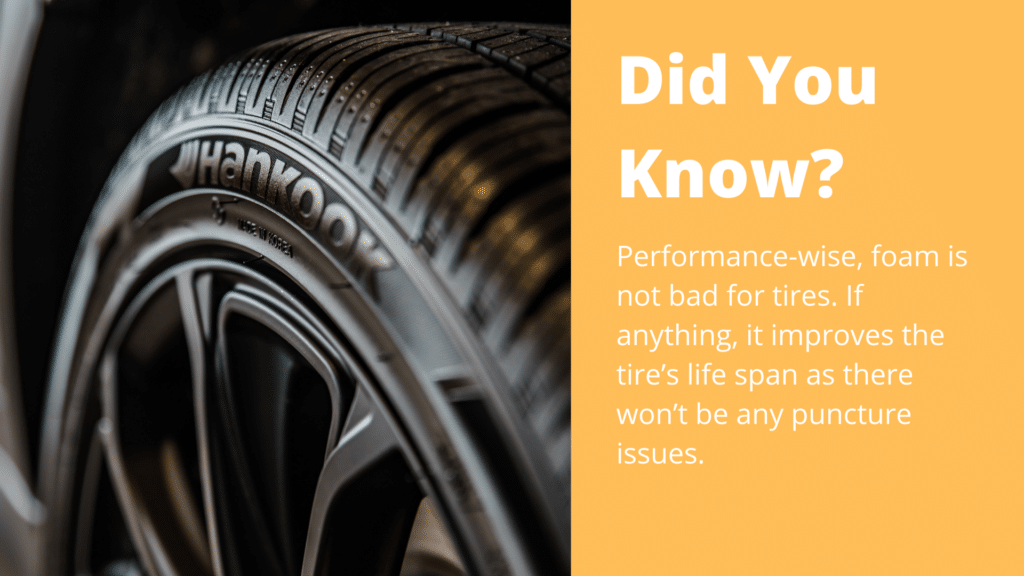
How Much Do Foam Filled Tires Weigh?
The weight of foam-filled tires depends on the volume of foam added to the tire, which further depends on the size of the skid steer tire. Two of the most common skid steer tires have the following dimensions;
- 10×16.5
- 12×16.5
Based on these dimensions, the weight of one foam-filled 10×16.5 tire will be 130 pounds. So for four tires, the total weight added to the skid steer is 520 pounds, just for the tires. The same for a 12×16.5 tire will be 205 lbs, and for four tires, the total volume of foam required will be 820 lbs. This is what gives extra stability to the vehicle and makes it a better choice for rough terrains.
Should I Foam Fill Tires Myself?
The short answer would be no. For one, the skid steer tires are nothing like car tires. These are the big boys we are talking about, and handling them is easier said than. We understand that taking the skid steer to the mechanic is also a task, but going to the mechanic is the safer route.
Is Foam Bad For Tires?
Foam is not bad for tires per se. Yes, it makes the tires heavier, and it won’t bulge or bend under pressure. In some situations, this can cause some trouble with driving due to gripping issues.
The only downside to filling foam in the tires is that they are practically junk after they wear out. You cannot use them in other places, at least not easily. Plus, the tires will be heavier than other bald tires, which may be used in other places.
But performance-wise, foam is not bad for tires. If anything, it improves the tire’s life span as there won’t be any puncture issues.
Frequently Asked Questions
Is it safe to fill foam in the tires myself?
Yes, the process is safe. As long as you are following the proper process, things will go smoothly. However, the problem may arise after replacing the tire on the vehicle because we have heard cases when tires went flat right after bringing the vehicle down.
How much does foam fill costs?
It depends on the tire and the cost of the container, and its capacity. As discussed above, one 10×16.5 tire requires 130 lbs, and one 12×16.5 tire requires 205 lbs of foam. Depending on the volume required (approximately 24.5 gallons for one 12×16.5 tire), you can calculate the cost.
Is it legal to fill foam in tires?
Yes, the US FMCSA regulations Section 393.75 mandates that the tire can be filled with materials other than air including silicone and polyurethane.
